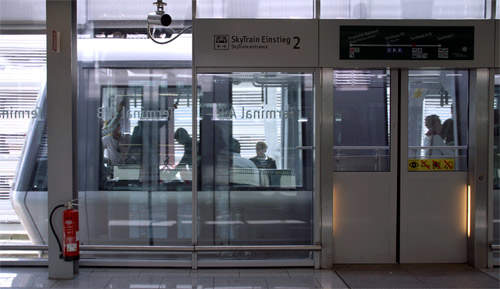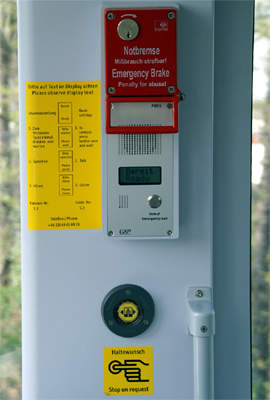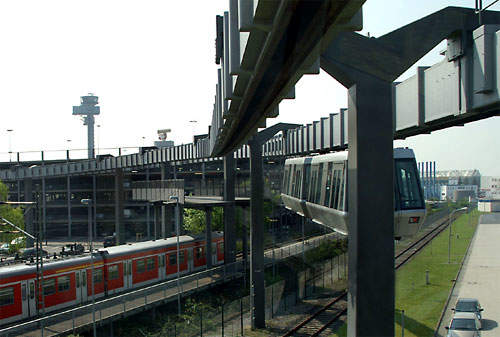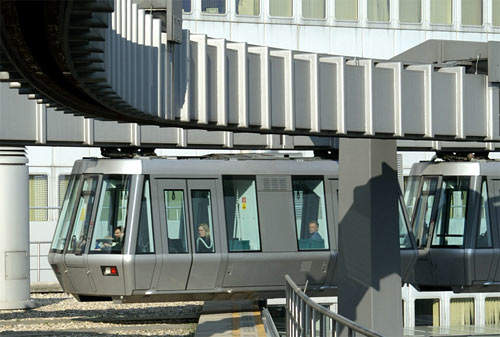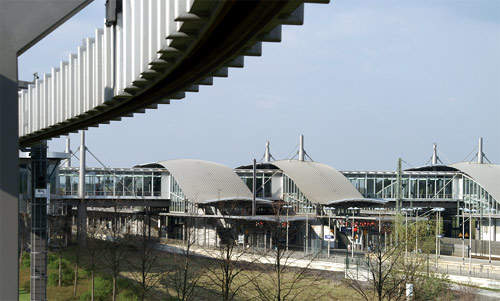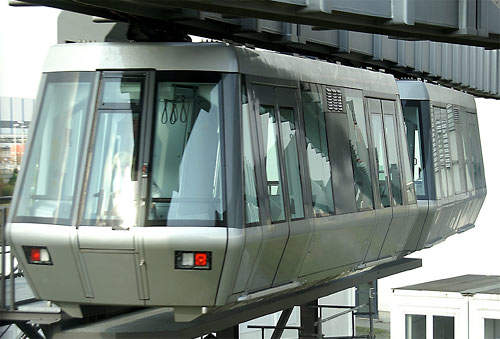The H-Bahn systems in Dortmund and Düsseldorf, Nordrhein-Westfalen (NRW), Germany are both of the SIPEM type (Siemens People Mover). Infrastructure is relatively lightweight compared to nearby Wuppertal’s Schwebebahn, the pioneering suspended rail system opened in 1901.
The H-Bahn (Hängebahn – hanging railway) evolved from an experimental 1.5km project in Düsseldorf, not the present installation, dating from 1975.
THE PROJECT
Jointly funded by the federal government, Dortmund and NRW, an H-Bahn was developed by Siemens and Waggonfabrik Uerdingen to link the University of Dortmund’s north and south campuses. Opened in 1984, the 1.05km (0.65 mile) line was joined by a 900m (0.56 mile) branch in 1993.
This linked the system to the S-Bahn, in turn allowing services to join the Verkehrsverbund Rhein-Ruhr VRR tariff union. Original equipment was upgraded consistent with the extension to the Technology Park opened in 2003. The extension brought the system length to 3.16km (1.96 miles) and allowed the operation of two routes.
The H-Bahn at Düsseldorf Airport, Germany’s third busiest, was integral to substantial rebuilding that followed a catastrophic fire in the passenger terminal in April 1996. The airport axis lies across a fork formed by the DB Düsseldorf-Duisburg main line and the S-Bahn branch ending at the passenger terminal.
To give access to rail passengers directly from IC/ICE and regional trains without having to change onto the S-Bahn service at Düsseldorf Hauptbahnhof, a new station was built on the main line at the eastern edge of the perimeter.
Although the airport station contained airline check-in facilities (since removed), passengers would need to travel the equivalent of the full runway length across intensively developed space to the newly-built main terminal. The solution adopted was an H-Bahn similar to that at the University of Dortmund.
For passengers this gave the added benefit of maintaining the level of the station concourse and the main terminal. Designated ‘SkyTrain’, the service opened in July 2002 on a 2.5km (1.6 miles) double track, with a range of traveller and visitor tickets valid for its use.
ROLLING STOCK
Trains are suspended from a hollow beam, with dual axle running gear fitted with hard rubber tyres contributing to quiet operation. Side-mounted wheels, also inside the beam, provide guidance. Two independent traction systems and a combined regenerative-rheostatic braking system are installed.
The aluminium driverless cars, single at Dortmund, in pairs at Düsseldorf, have a maximum speed of 50km/h (31mph). Sliding doors have coordinated opening with those at the glass-walled stations. Taking five minutes end-to-end and featuring some seating with ample floor space for standing passengers and luggage, SkyTrain is capable of moving 2,000 passengers in one direction per hour.
INFRASTRUCTURE
H-Bahn track uses prefabricated modular units assembled on site, single track at Dortmund and double at Düsseldorf. Stations are unstaffed, featuring visual and audio announcements. The beams carrying and directing vehicles are supported on gantries with a small ground footprint that allows for using the space beneath for other purposes.
Junctions allow for switching track as at the maintenance depots and for operating multiple routes (Dortmund). The SkyTrain infrastructure is an integral part of the Düsseldorf terminal building and its operation.
SIGNALLING / COMMUNICATIONS
The systems are fully automatic and centrally controlled. Technology is installed to regulate trains relative to each other, allowing for placements as close as 3cm (1.2in). The vehicles have prominent internal emergency and communication fittings. Warning sounds indicate door operation, with screen and audio station announcements in German and English.
THE FUTURE
Düsseldorf’s H-Bahn has proven at times to be a troublesome yet effective solution to the airport’s configuration relative to its conventional rail links. System breakdown has led to bus substitution. However, these longer and awkward passenger transits, also adding to the airport’s ground level congestion, have proved the soundness of the concept.
With 5,000 passengers daily and a high availability rate, Dortmund University’s system is being considered for further extensions towards the city centre with more integration with other transport modes.

